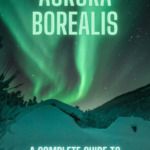Experience the magic of the aurora borealis, as nature's most dazzling light show dances across the sky, steeped in myth and science. Here's everything you need to know about nature's night show in Norway.
Aurora borealis, often a subtle glow in the night sky almost indistinguishable from a cloud, can suddenly expand into a breathtaking spectacle of vibrant colours.
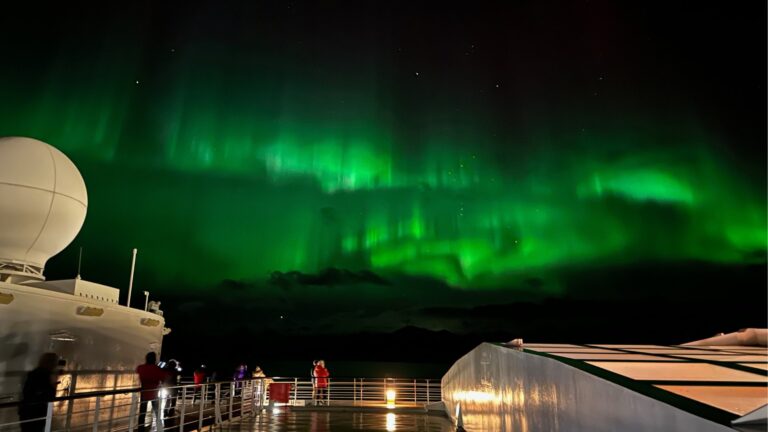
This elusive display of nature, also known as the northern lights, results from energised solar particles colliding with Earth's atmosphere, creating luminous waves that captivate and mystify in equal measure.
The excitement of searching for the northern lights is a topic I never tire of discussing. The allure of witnessing the natural phenomenon draws people from all across the world to the Arctic, eager for a glimpse of the lights.
I've personally seen aurora borealis several times here in Trondheim, but many more times when I've travelled north of the Arctic circle.
The Growth in Aurora Tourism
Over the last 18 months, I've joined a handful of northern lights cruises to Arctic Norway, full of British passengers hoping for a glimpse of the natural phenomenon. For me, these experiences have been fascinating, and eye-opening.
The fascination with the northern lights began to significantly shape tourism in the 1980s when Japanese visitors started traveling to Alaska, an occurrence that both surprised and intrigued the locals.
Since then, aurora borealis tourism has expanded globally, attracting travellers to the Arctic regions of the world.
A 2019 report by Visit Norway highlighted that “northern lights” ranked as the third most popular search term among those planning trips to Norway, trailing only behind fjords and glaciers. Interest in the aurora borealis surpassed searches related to cruises, hiking, skiing, and camping.
With the anticipated solar maximum expected to enhance auroral activity in the near future, interest in northern lights tours and cruises is projected to grow even further, promising a continued boom in this unique sector of travel.
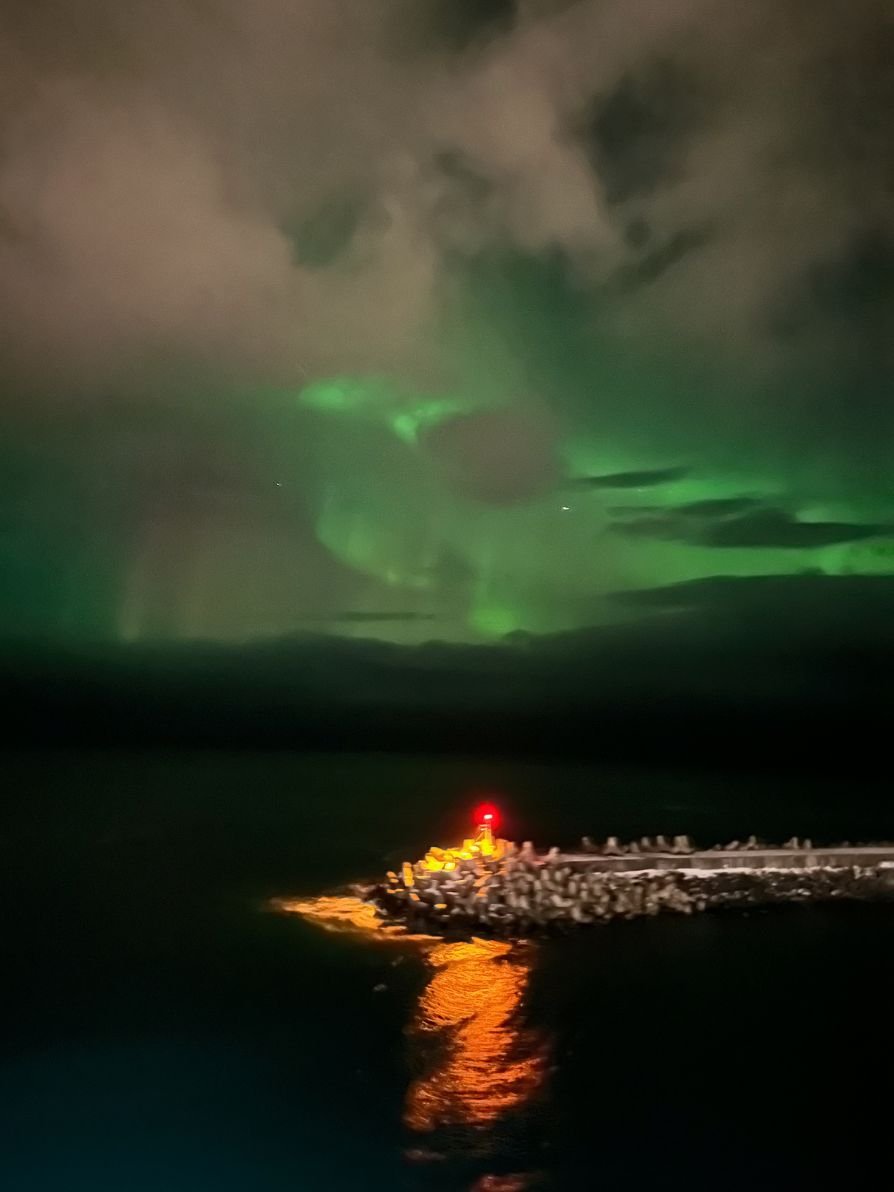
However, with such growth, comes an increase in travellers who aren't really prepared. They don't necessarily understand what the aurora borealis is, and the reality doesn't always meet their expectations.
What Causes Auroras?
Auroras originate from the Sun, which emits a solar wind packed with charged particles that travel toward Earth. Our planet's atmosphere, specifically its magnetic field, serves as a shield against these particles.
These particles, primarily electrons, follow the magnetic field lines to the Earth's poles. There, they interact with hydrogen and oxygen atoms. The interactions trigger energy releases visible as light.
This phenomenon occurs at both the North and South Poles, known respectively as the aurora borealis or northern lights, and the aurora australis or southern lights.
Recent research has discovered that these electrons are transported by Alfvén waves, which propel them at speeds necessary to generate auroras. This process is akin to a surfer riding a powerful wave in space weather terms.
Read more: What Causes the Northern Lights?
What Do the Lights Really Look Like?
If you've marveled at stunning photographs of the northern lights, you might wonder, “do they really look like that in person?”
The answer is yes, and no. First of all, the appearance of auroras can vary significantly. These natural light displays might manifest as a faint arc or as vibrant rays, even forming the well-known curtain-like shape.
Their behavior is equally varied, ranging from nearly stationary to pulsing or rapidly shifting. Your viewing experience also heavily depends on your geographical location; the same aurora can appear quite different when observed from various latitudes.
The colours of the aurora, from subtle to intense greens, are influenced by the strength of the electron bombardment on atmospheric elements and the height at which these interactions occur. Green, in shades from pale to deep, is the most frequently observed colour.
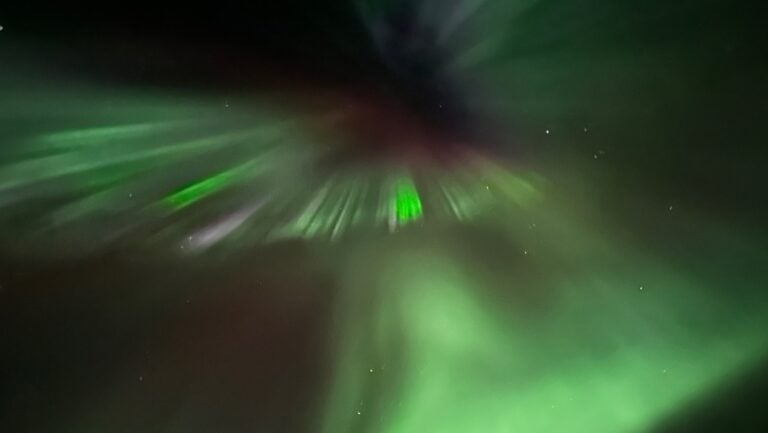
That's all well and good, but, can you see them with the naked eye? The answer is, it depends.
The way we perceive the aurora borealis varies, influenced by individual visual perception and factors like time spent in darkness before viewing.
However, the primary challenge is photography; modern cameras and smartphones capture the lights' intensity more effectively than the human eye, similar to other night-time light sources.
This means that many aurora hunters spend so long with their cameras, they don't give their own eyes time to adjust and appreciate the aurora. It can take 10-15 minutes for your eyes to fully adjust to darkness.
Read more: Northern Lights: What Do They Really Look Like?
How to See the Aurora Borealis in Norway
Experiencing a spectacular aurora display is a bucket-list item for many, and while there's no surefire way to guarantee a sighting, following expert advice can significantly enhance your chances.
Firstly, positioning yourself within or near the aurora oval is crucial. This donut-shaped zone encircles the Arctic and is most pronounced over the northern parts of Scandinavia, Alaska, and Canada.
In Norway, the oval crosses many cities in the Arctic Circle including Tromsø and Alta. Auroral activity expands southward during stronger geomagnetic storms, increasing visibility even at lower latitudes.
Timing is also key. The months between September and April offer the longest nights, essential for observing the aurora.
Although December and January provide the darkest skies, they also coincide with some of the harshest weather conditions, including cloud cover that can obscure your view.
Optimal viewing months are often late September to early November and February to early March, when clearer skies are more common.
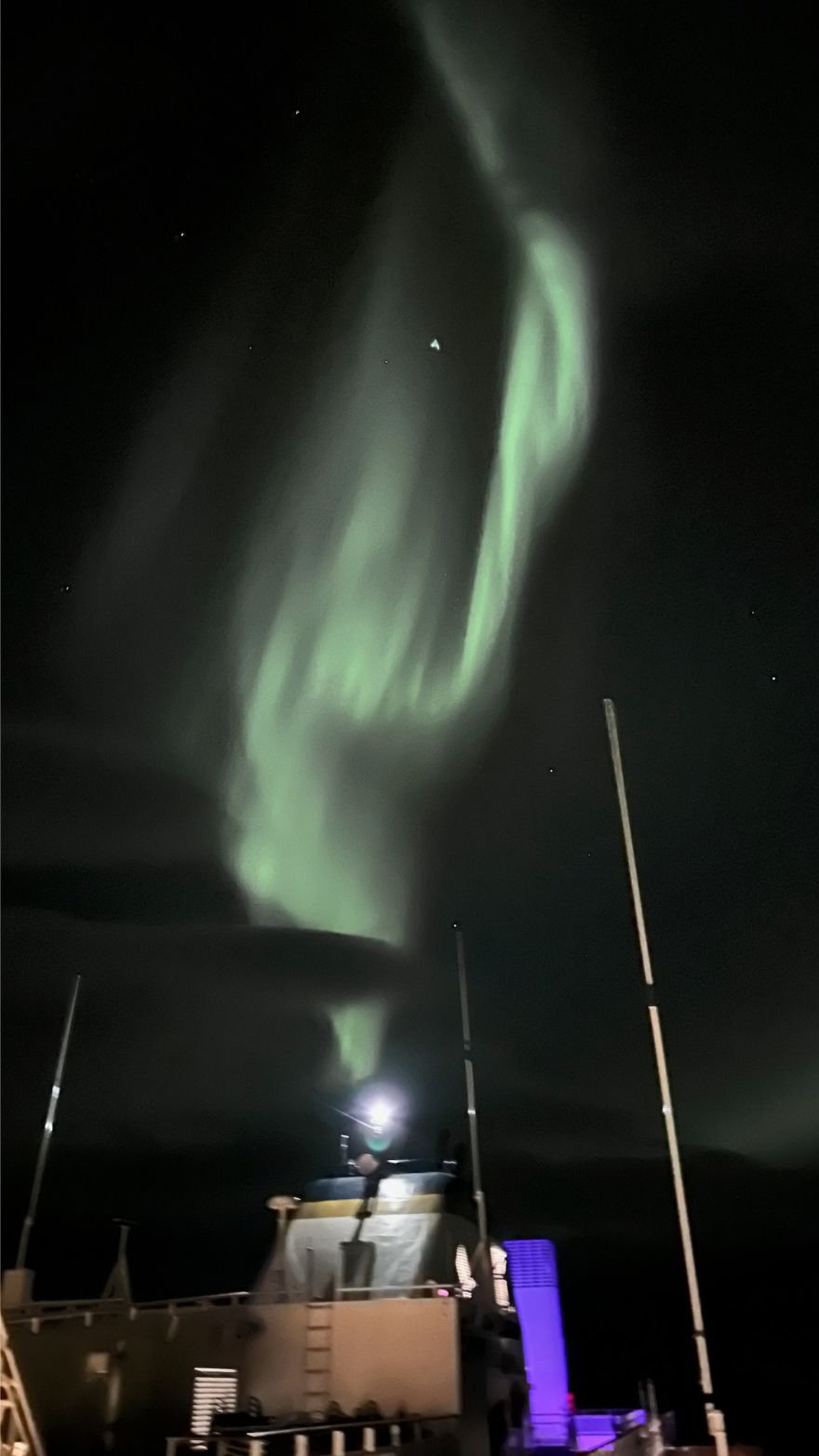
Avoiding light pollution by staying away from city lights can dramatically improve your chances of witnessing even the fainter displays of the aurora. Smaller towns or rural areas with minimal lighting are ideal for this purpose.
Additional tips include checking the weather and auroral activity forecasts regularly to time your outings.
Websites and apps dedicated to auroral forecasts can alert you to the best nights for a potential sighting. Dressing warmly and being patient are also vital, as aurora watching often involves extended periods outdoors during very cold nights.
Remember, each aurora experience is unique, and part of the magic lies in the unpredictable nature of these celestial dances. Prepare well, stay informed, and enjoy the awe-inspiring beauty of the northern lights.
Read more: How to See the Northern Lights in Tromsø
How to Forecast the Aurora Borealis
Advancements in space weather forecasting have made it possible for anyone with a smartphone to access the same aurora predictions used by professional tour guides.
The University of Alaska Fairbanks' Geophysical Institute provides excellent broad forecasts through the use of the Kp index, which measures aurora strength.
A Kp index of 1 or 2 indicates a weak display, which might still be observable in the far north. A Kp index of 3 or higher suggests a higher probability of a vivid aurora, visible even further south.
For more immediate updates, consider downloading an aurora forecasting app. These apps can provide 15-30 minute alerts for strong auroral activity based on your location.
While they are not foolproof, they are a valuable resource for anyone eager to witness this natural spectacle.
Aurora Borealis Travel Destinations
While latitude is key for viewing the northern lights, weather, especially cloud cover, is equally crucial. Tours in coastal Norway often drive inland or even cross into Sweden or Finland to find clear skies.
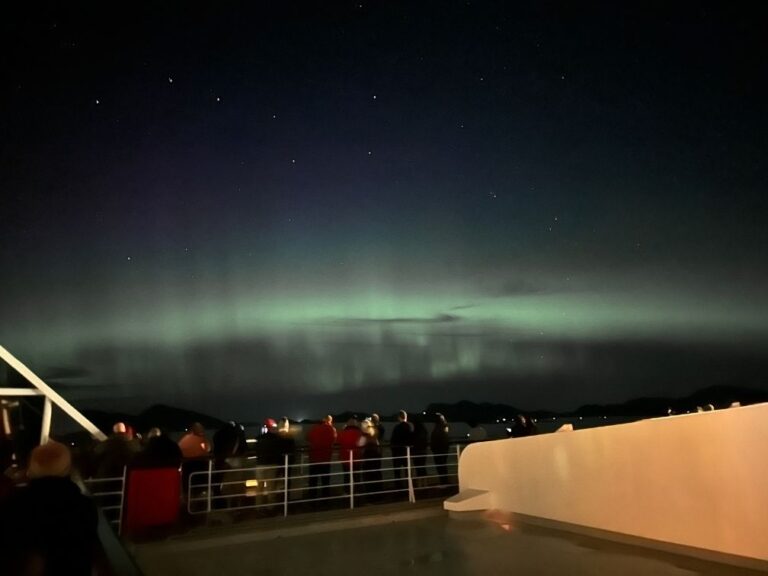
It's also essential to consider local attractions, as travel to remote areas in North America or Scandinavia can be costly. Maximising daytime activities ensures you get the most from your trip.
Alaska: With few urban centers, much of Alaska offers optimal conditions for aurora viewing. Fairbanks is suitable for newcomers, providing both a high northern latitude and various activities. For the more adventurous, Coldfoot or Wiseman offers excellent conditions and winter sports like snowshoeing and dog mushing.
Canada: Churchill, Manitoba, offers the opportunity to see another of nature’s wonders, the polar bear. Nearby, the Northern Studies Center provides even clearer skies. Farther south, Alberta's Elk Island and Jasper National Parks are designated dark sky reserves, while Whitehorse and Dawson City in Yukon are other prime locations.
Iceland: Despite being slightly south of the ideal latitude, Iceland's varied attractions make it a worthy option, especially if you can extend your stay to boost your chances of witnessing the aurora.
Norway: Tromsø and Alta are top contenders for the best viewing spots, with numerous tours available. Cruises along Norway’s long coastline are popular, as they frequently encounter clear skies, though they can make photography challenging.
Sweden: Abisko is famed not only as Sweden's prime location but also as one of the best globally due to the ‘blue hole,' a patch of sky typically clear of clouds due to geographic positioning.
Finland: Often underrated, Northern Finland provides a great alternative. Rovaniemi is family-friendly, easily accessible, and famously hosts Santa Claus.
Aurora Borealis Destinations in Norway
Norway, with its high latitude and active auroral zone, offers some of the best locations in the world for viewing the northern lights. Here are three to four prime destinations within Norway that are renowned for their aurora sightings:
Tromsø: Tromsø sits well above the Arctic Circle and is one of the most popular destinations for aurora enthusiasts. The city not only provides a high chance of witnessing the aurora but also offers a vibrant culture and a range of winter activities, such as dog sledding.
Read more about how to see the northern lights in Tromsø and check out these recommended aurora tours from Tromsø.
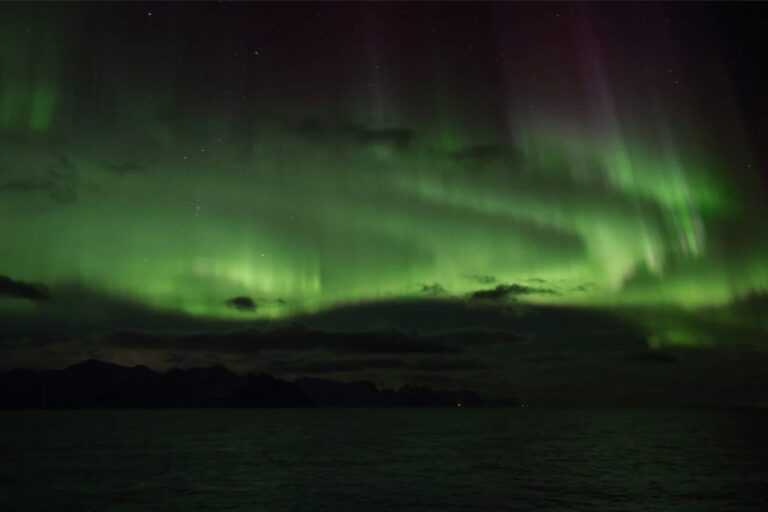
Alta: This small city is home to the world’s first aurora observatory built in the late 19th century. Its clear, stable weather conditions make it an ideal spot for witnessing the dazzling lights. Beyond the lights, visitors can explore rock art dating back up to 7000 years, a UNESCO World Heritage Site.
Lofoten: While not as far north as Tromsø or Alta, the Lofoten Islands offer a unique backdrop for the aurora with their dramatic peaks and picturesque fishing villages. The islands are slightly south of the auroral oval, but when activity is medium-to-high, they offer spectacular views with relatively mild winter temperatures.
Svalbard: Located halfway between mainland Norway and the North Pole, Svalbard is one of the few places in the world where you can witness the Northern Lights during the daytime, thanks to the polar night from November to February. This remote archipelago offers a true Arctic adventure with its unique wildlife, including polar bears, and snow-covered landscapes.
How to Photograph the Northern Lights
Previously, capturing the aurora borealis was largely the domain of professional cameras. However, modern advancements in smartphone technology now allow amateur photographers to take impressive shots of this natural phenomenon.
While magazine-quality images still demand a professional camera and the expertise to manipulate aperture, ISO, and shutter speed effectively, high-end smartphones from the last few years are more than capable of producing satisfactory photos to cherish the memory.
It's essential to have a phone with a night mode or a capability for long exposure shots. Practicing these settings on nighttime shoots before your trip can greatly enhance your results and avoid disappointment during critical moments.
If you are bringing a standalone camera, whether for hobby purposes or as a professional, be sure to learn the best northern lights camera settings that are appropriate for the equipment you have.
Testing these out in advance of your trip is a wise move. Try taking photographs of stars, or even cityscapes at night, and you'll start to see what works and what doesn't.
Nevertheless, sometimes it's best to set aside the camera and simply enjoy the spectacle of the aurora with your own eyes. The experience of watching the lights dance across the sky can be far more rewarding than any photograph.
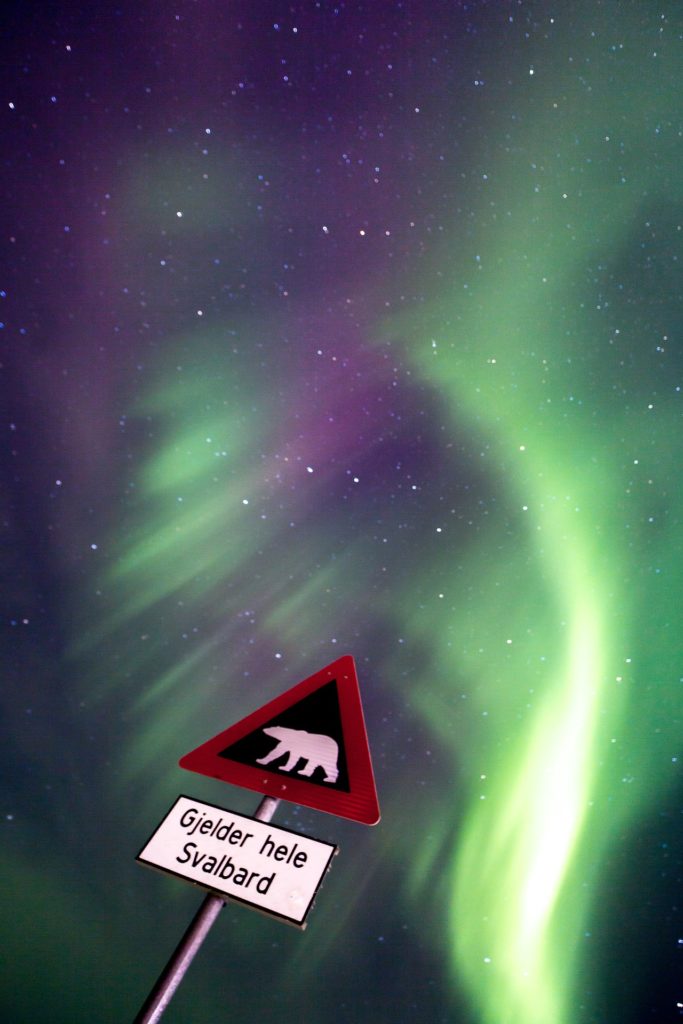
That's especially true if you're going on a northern lights cruise. The movement of the ship will likely diminish the quality of any photographs you do manage to take, unless you are lucky enough to capture them while ashore, or docked.
How to Dress for an Aurora Chase
When dressing for an aurora chase, the key is to prioritise warmth and comfort, as you'll likely be outside in cold and possibly sub-zero temperatures for extended periods.
With that in mind, here are some essential tips:
Layer Up: Start with a moisture-wicking base layer that keeps sweat away from your skin. Add a warm middle layer, like a fleece or wool sweater, to insulate and retain body heat. Your outer layer should be windproof and waterproof to protect against harsh weather.
Insulated Outerwear: Wear a heavy, insulated coat, ideally one designed for winter sports or expeditions. Snow pants can provide additional warmth and protection against the cold ground or snow.
Accessories: Don’t underestimate the importance of accessories. A warm hat that covers your ears, a scarf or neck gaiter, and insulated gloves or mittens are crucial. Consider thermal socks and insulated, waterproof boots to keep your feet warm and dry.
Consider Convenience: Since you might need to adjust camera settings or handle other equipment, choose gloves with touch-screen compatibility or those that allow for easy dexterity.
By dressing appropriately, you can stay comfortable and enjoy the spectacular aurora display without the distraction of the cold.
Have you seen the aurora borealis in Norway, or elsewhere? Feel free to share your top northern lights tips down in the comments.

